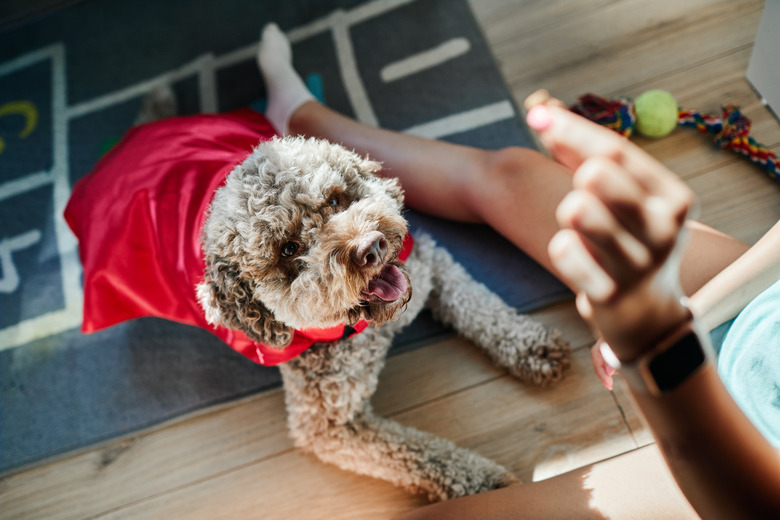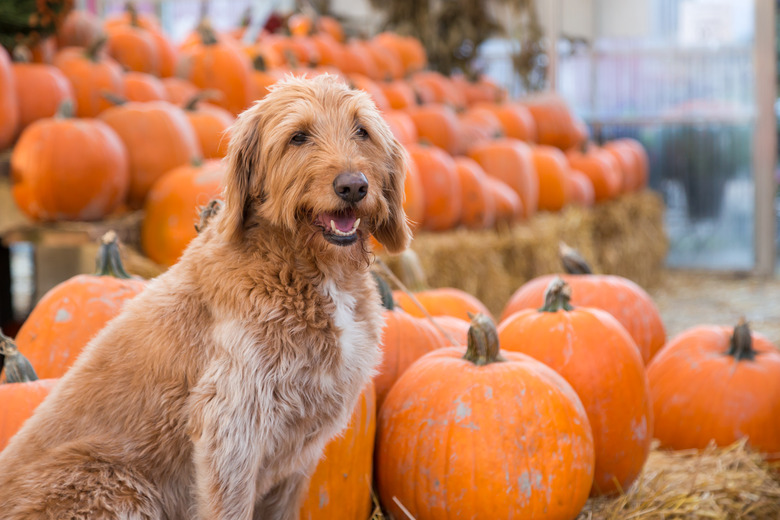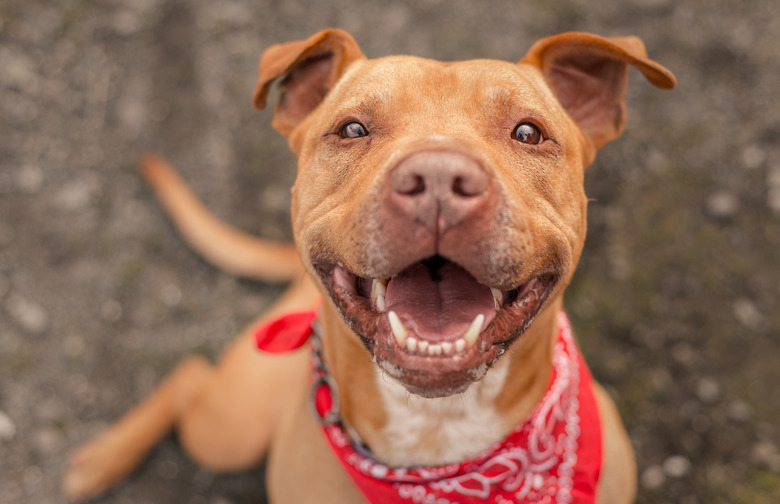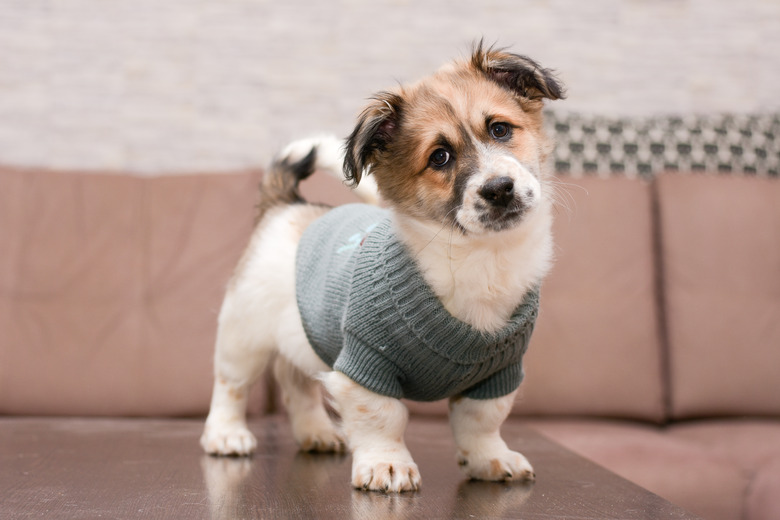Is It Ok To Put Clothes Or Costumes On Your Dog?
Many people enjoy putting clothing on their dog — a cute costume in for Halloween, a sweater and booties in winter, or a raincoat for the rainy spring season.
Though the dog looks adorable and doesn't seem uncomfortable, you might still wonder if dressing up your dog is OK. You don't want to do anything that would make him feel unhappy, after all.
Before you put another Halloween costume or any type of clothing on your dog, it's best to figure out how they feel about clothing, and what you can do to get them acclimated to any clothing they do need to wear.
Is it OK to put clothes on your dog?
Is it OK to put clothes on your dog?
When it comes to putting clothing on your dog, Janet Cutler, PhD, and a Certified Applied Animal Behaviorist at Landmark Behaviour, told Cuteness, "It really depends on the dog. There are many who are perfectly comfortable with clothing or costumes, however, in some dogs it can increase anxiety or fear."
Some types of clothes are worse than others, according to Cutler. She said that in general, dogs are less tolerant of costumes, hats, or shirts, "especially if they interfere with ear movement [or] ability to hear, or if it puts them off balance." Any costumes with eye masks should also be avoided, as they restrict the dog's ability to see.
Cutler also noted another concern: "types of clothing that have pieces that could be chewed or items that could be removed and be hazardous if the dog ingested them. Any time a pet is wearing a costume they should be carefully supervised."
If you're dressing up your dog in a Halloween costume to take them to a party or other Halloween festivity, keep in mind that the stimulation could make your dog unhappy as well. "Around Halloween, there are many other factors that can cause fear in your dog," said Cutler. "The strange or additional noise, people in costume, and possible extra attention can be very scary for dogs, so for many dogs keeping them away from much of the action is advised."
Signs your dog doesn't like wearing clothes
Signs your dog doesn't like wearing clothes
If your dog hates clothing, they will tell you with their body language. For instance, if the dog refuses to move, it likely means they don't feel comfortable in the clothing.
They may also roll around on the floor and act like they're trying to get the clothing off. Cutler said that many dogs will try to bite at the clothing if it's new to them, or they will display signs of fear: "If your dog shows signs of fear (tail tucked, body lowered, hiding) after they've had clothing on for a bit, that's a sign that it's causing them to be fearful. Any signs of aggression would also be a sign they aren't enjoying the experience." If you observe any of these signs, take the clothing off right away.
As Cutler noted, some types of clothes or costumes are more likely to be stressful for dogs. If you'd like your dog to participate in a festive clothing event without stress, opt for a bandana or a special collar. Many dogs tolerate bandanas more than other clothing (though it's always best to watch their body language for signs they don't like it), and there are lots of fun bandana and collar options out there.
Clothes that are necessary for dogs
Clothes that
are necessary for dogs
Halloween costumes may not be necessary, but sometimes, your dog does need to wear clothes. According to Cutler, some breeds, like those who are small or have very short coats, might need a sweater or jacket in cold weather. Additionally, dogs with sensitive paws may benefit from boots in the winter.
"It's not uncommon for dogs to find walking outside unpleasant, especially when [it's] very cold or there is salt on the ground," she said. "There are also specialized shirts on the market that can help with anxiety, such as during thunderstorms."
What should I do if I need to put clothing on my dog?
What should I do if I need to put clothing on my dog?
If you need to put clothing on your dog, Cutler advised doing it slowly and giving praise and rewards for calm behavior so that it's a good experience. (This will most likely take multiple sessions.) Use positive reinforcement, break the process down into small steps and reward for each step. It's best to start early — if your dog needs to wear a jacket in cold weather, start getting them used to it before the cold weather happens.
You might break down the process in a way like this: looking at the clothing, coming toward the clothing, touching the clothing, stepping into the clothing, having the clothing briefly fastened and then quickly taken off, then wearing the clothing for longer in small increments. Reward for every step and never use punishment.
A clicker or marker word (such as "yes!") can be helpful in this process. You can also reach out to a qualified, certified trainer for help.
Eventually, once your dog is wearing the clothes, make sure you monitor them to make sure they aren't having an allergic reaction. "There is a possibility of allergies or even irritation due to material movement," said Cutler. "If there is any redness you're concerned about or excessive scratching/biting at an area, I would recommend talking to your veterinarian."
In summary
In summary
Some dogs are fine with being dressed in clothes, while others are not. Pay close attention to your dog's body language—if they indicates that they don't like a costume or other clothing that isn't strictly necessary, take it off!
If your dog is wearing anything for the first time, keep an eye on them to monitor for allergic reactions, and take the clothes off if you notice any skin irritation.
If you need your dog to wear clothing for their own protection, such as in cold weather, introduce the clothing slowly using positive reinforcement training, and consider calling in a qualified, certified dog trainer for help. Then you will have peace of mind that your pup is safe and cozy in their clothes.



